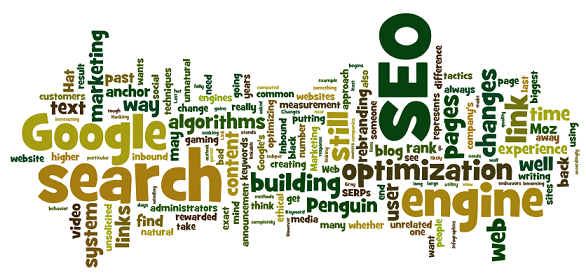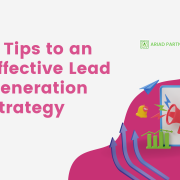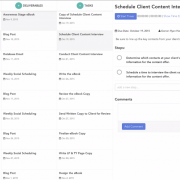Warning: Undefined variable $blog_global_style in /home/ariadpartners/public_html/wp-content/themes/enfold-child/includes/loop-index.php on line 198
Warning: Undefined variable $blog_global_style in /home/ariadpartners/public_html/wp-content/themes/enfold-child/includes/loop-index.php on line 313
Does SEO Mean Anything Anymore?
Last week, one of the biggest proponents of search engine optimization, SEOMoz, announced that they were rebranding their company and becoming Moz, a provider of analytical tools to help people in their inbound marketing endeavors.
The writing had been on the walls for some time, I think. Rand Fishkin posted a Whiteboard Friday video blog back at the beginning of May, where he effectively writes the epitaph of SEO at least from his company’s point of view. Changes over the past few years from Google regarding its search engine result rankings have also served as writing on the wall for SEO as it has been practiced for years.
In both Fishkin’s rebranding announcement, as well as the video blog, he alludes to the difficulty in getting away from the bad aspects of search engine optimization – the black hatters. Web administrators and agencies using black hat SEO tactics to get temporary gains in search engine result pages. These tactics sought to fool search engine algorithms by gaming the system: Keyword stuffing, link building through unrelated sites, buying links, doorway pages, cluttered, spammy pages, links with anchor text that take the user to a completely unrelated page – all methods that were built around gaming the search engine algorithms while at the same time providing a subpar user experience.
What’s always been telling about SEO has been this dual nature of its practice. There’s very few technical disciplines that are drawn along such ethical lines. White Hat, Black Hat, Gray Hat. Hacking (ethical or otherwise) comes to mind. Not something I really want to be compared to. SEO has always been fighting this uphill battle for respectability even as companies realized its importance.
The issue is what SEO stands for – search engine optimization – is still necessary, still viable, and still crucial. Search engine optimization is tied to the changes of the algorithms of the search engines it seeks to optimize for. Seems common sense, doesn’t it? As Google or Bing changes their algorithms, the techniques of search engine optimization change as well. When a system can be gamed, you either improve the system, or you start to lose some of the fundamental utility of that system. And so it is with Google.
Enter The Penguin:
Just last month, Penguin 2.0 hit the web, for which Matt Cutts, head of Google’s Web Spam team, laid out the major changes in a video blog. The biggest target for Penguin has been unnatural link building.
What is unnatural link building? Consider for a minute what occurs when someone wants to actually garner more links for their website. In the past, they’ve contacted web administrators and owners of various websites, and have asked or, in many cases, paid to get a link back to their own website using specific keywords in the anchor text, or at the very minimum, the company’s name. Repeated ad nauseum, and you would find a link profile that has the exact same keywords repeated over and over and over again, in exactly the same way.
With natural link building, we wouldn’t expect to see the same anchor text arise time and again, because we would ideally want this behavior to be unsolicited. If it’s unsolicited, it’s very likely that the same text is not going to repeat over and over. Thematically, it may be very similar, but it will not be universally identical. Google has been pushing, through its algorithm updates, for a more natural approach to linking – one that can really only come when someone wants to share content that they find interesting.
Penguin represents a perfect example of how Google responded to the way SEO practitioners had been changing websites to rank well in Google’s SERPs. Link building techniques like directory submissions were common for many web admins for a long time. However, as Google has changed their technology, and their outlook on how web pages should be ranked, SEO needs to adjust as well.
Why SEO Still Matters:
It’d be folly to think this is the last change that Google is going to present. While we need to take to heart what Google is seeking when it rolls out its changes (quality, linkable content that induces sharing naturally), we also need to keep an eye on what those exact changes are. If Google begins to rank web pages higher based upon activity on social media, our collective response to this is still optimizing for search engines.
This brings me back to Rand’s announcement about the rebranding of Moz. Take particular notice of the graphic near the top of the page that defines the difference between Inbound Marketing and Interruption Marketing. SEO still represents a large part of Inbound marketing tasks. When we advocate creating personal blogs, infographics, articles that seek to inform customers, the purpose is to create content that people find useful, reflected in the number of links and the number of shares in social media. One measurement of the success of this approach is a higher position in Google SERPs. The ultimate measurement is more leads and customers.
Either way you cut that, you are engaging in search engine optimization. That may be a dirty word now, and you may increasingly see it rolled under the banner of inbound marketing or digital marketing, but make no mistake, this is what you are doing. Moz understands this, and has adjusted their branding accordingly. They definitely aren’t shying away from the benefits of SEO, though.
In the end, the difference between good SEO and bad SEO is whether you are optimizing in a way that is mindful of each search engine’s goals, following best practices in doing so or optimizing solely against the engine’s algorithms regardless of the user experience. In the past, some sites were frequently rewarded for putting out crud that would still rank high in search results. Hopefully, those days are winding to an end. Others are rewarded for putting out content that falls in line with creating a great user experience. Keep the user experience in mind, and it’s pretty tough to go wrong.









